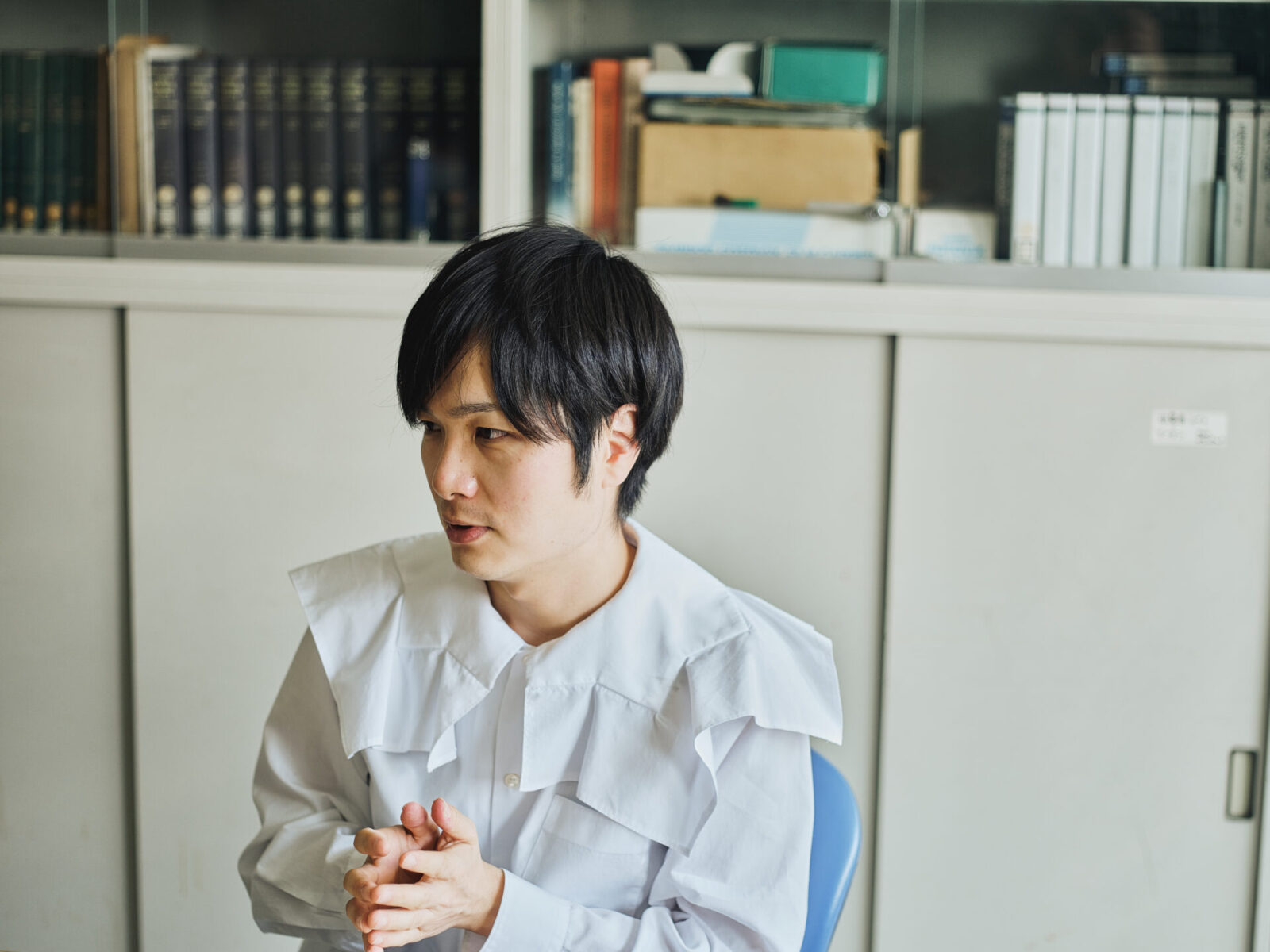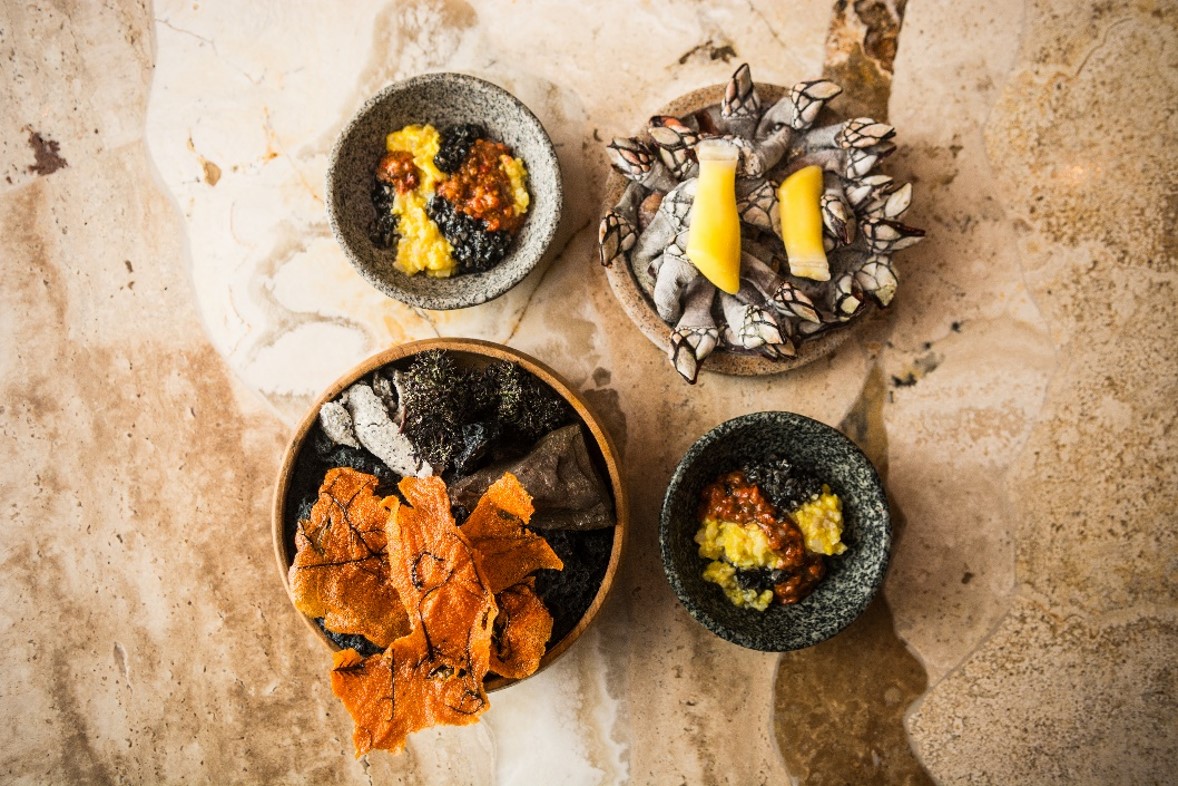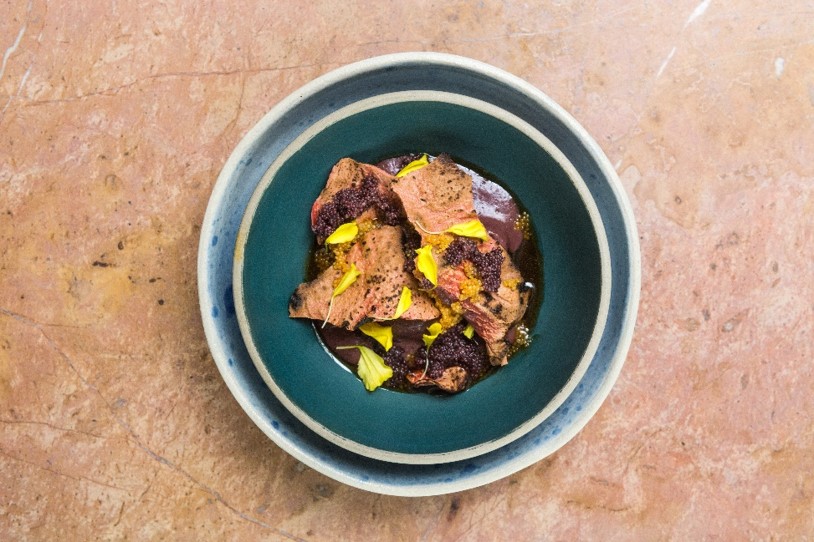Contemporary cuisine is a movement among many high-end restaurants around the world.
It is described as a cuisine that attempts to interpret nature and culture in an avant-garde manner within the context of the restaurant environment..
Shu Fujita, a specially appointed researcher at the Tokyo University of Foreign Studies and a doctoral student at the University of Tokyo, studies such contemporary cuisine through the angle of cultural anthropology.
Fujita conducted his fieldwork for two years while working as an apprentice at Central, a world-class contemporary cuisine restaurant in Peru. (editor’s note: Central has won second place in The World’s 50 Best Restaurants in 2022 and first place in The 50 Best Restaurants in South America). He has researched how chefs approach the creation of new and innovative dishes.
Although contemporary cuisine gives the impression of being sophisticated and of high culture, Fujita says that if you understand its principles, “It has the potential to change the way we see home cooking and other common dishes.”
So what exactly is contemporary cuisine? What defines the act of cooking in the first place? We spoke with Fujita about his research to find out.
What lies beyond the “local vs global” clash
── Contemporary cuisine is not a term we hear often. What would you say the definition of contemporary cuisine is?
Contemporary cuisine refers to a style of cuisine that is based on traditional fine cuisine such as French cuisine, but it goes beyond traditional boundaries to interpret nature and culture in an avant-garde manner within the context of the restaurant environment.

At Central, a contemporary cuisine restaurant where I did my fieldwork, all of their dishes we focused on the characteristics of various landscapes and regions, such as, an ocean,a desert, the Andes, and the Amazon, and those dishes were made to portray the gifts of nature of those places.
For example, they have a dish named Red Rock. It portrays the coastal ecosystem of Peru, which has an altitude of minus 10 meters, and uses marine products such as camenote, which grows on coastal reefs, and piure, a member of the ascidian family with a distinctive red flesh.

Another dish is titled Extreme Highlands, which uses colorful native corn varieties to portray the ecosystems of rural Andean villages that are found at an altitude of 4,350 meters.
The dumplings are made with white corn, while the bubbles are made with purple corn and chips are made with red corn. The dish is served with a sauce made from a traditional fermented corn beverage. It is a combination of various shapes, colors and textures.

── Portraying altitude in cuisine is very original and contemporary. When thinking of cuisine, we usually think about the combination of flavor and color and the combination of seasonal ingredients.
This concept is very much based on the locality of Peru.
For example, the Andes people have a way of looking at the world through cosmology based on differences in elevation. There are the heavens, the earth and the underworld.
There are completely different ecosystems that can be found in Peru depending on the altitude, from the ocean to deserts to high mountains and tropical rainforests. The various features of these ecosystems are expressed through cuisine.
── What are other examples of contemporary cuisine from other regions?
One example of contemporary cuisine that is very well known is the Bouquet of herbs, crème fraîche sprinkled with ants at Noma in Denmark. Noma is one of the restaurants that initiated the contemporary cuisine movement.
The dish is a combination of herbs and crème fraîche and when they wanted to add a sour flavor to the dish they decided to sprinkle ants on it because lemons and other citrus fruits do not grow in the Northern Europe region.

A fundamental principle in contemporary cuisine is to use local ingredients to create new dishes.
It expands the potential of edible ingredients and brings out flavors to make a delicious dish. In this way, it deepens our relationship to the local land.
When did chefs become artists?
── When did the movement of contemporary cuisine begin?
It is said to have started towards the end of the 2000s when it began showing up in some high-end restaurants around the world. However, there is a lot in its prehistory that led up to it.
── What was its prehistory?
Haute cuisine was established in France in the 18th and 19th centuries in which recipes by famous chefs became canonized, and chefs were considered artisans who reproduced the dishes. Because of this, not much value was put in creating something new.
In the 1960s, a new movement called nouvelle cuisine emerged in France and chefs began to be regarded as artists who create new dishes.
In haute cuisine there is a lot of value placed on ingredients such as foie gras and caviar, and it did not look at the freshness of an ingredient so much. However, nouvelle cuisine puts a lot of emphasis on going to the early morning market to get the freshest ingredients.
This was related to the changes occurring in society at the time, where having refrigerators was becoming the social norm. It is also around this time that a lot of emphasis was put on vegetables, which were not really valued before.

── So there was several hundred years of prehistory that was based on haute cuisine, and in the late 20th century the nouvelle cuisine, which is based on creative cooking, began.
In the 1990s, a movement that was most important for the birth of contemporary cuisine began that was known as modernist cuisine.
A prime example is the Spanish restaurant El Bulli, which is very famous among gourmet lovers. At this restaurant they began serving dishes that were both creative and scientific in nature.
One of their most famous dishes is their deconstructed version of cured ham with melon. It is served in a cocktail glass with melon juice that has been hardened into small round balls (like ikura, or salmon roe) and served in ham consommé soup. For anyone experiencing this dish for the first time, it has a very surprising presentation and it is like a cocktail that is combined with caviar.
The idea behind this dish was not only to create something delicious, but to also instigate surprise. It created a new aspect and value of cuisine by offering new experiences.
With this backdrop of modernist cuisine, the movement of contemporary cuisine really took off in the 2000s.

New cuisine created through new combinations
── When you did your field work at Central and other restaurants, how did you proceed with your research?
I worked as an apprentice chef in the kitchen.
At first, I did simple tasks such as peeling vegetables and eventually I was allowed to work with the chefs to plate the dishes. When the chefs had some free time I was able to work with them to create prototypes for new dishes and drinks.

── So you studied the chef’s techniques and methods through the position of an apprentice?
Yes. I was careful to be respectful to all the things that the chef was doing. My methodology was to take interest in everything.
As a general rule, I wanted to find out what exactly it was that contemporary chefs are thinking in their kitchen and expand the view of what defines the act of cooking. For example, I wanted to find out exactly how they went about creating new dishes.
── What is the process like for making new, innovative dishes?
Bricolage is a term to describe the construction or creation of something using a range of tools or ingredients that are at hand in the moment. It is the idea that creativity comes from combination.
The chefs have a deep memory of how each ingredient tastes and through exploring different combinations of these flavors, they create new dishes.
For example, one time I asked why they chose to combine an Amazon lemon with cilantro, and their answer was simply, “These two flavors somehow go together.”
When I approached the same question differently, the chef answered, “The aromas of the lemon and cilantro connected.” In other words, they took the existing properties of lemon and cilantro to find what combinations would be good or bad for them.
── Does it take the so-called “genius” senses of the chefs in order to come up with such combinations?
They are able to detect various properties of each ingredient, so I believe that they may have very precise and highly tuned senses.
However, I do not believe this is based on some innate genius or talent.

I think it comes from their experience and knowledge of knowing countless recipes and combinations of lemon and cilantro to understand how they will go well together.
Rather than being based on innate genius, they have years of accumulated experience of repeated processes. Because of that experience, they have an expanded range of knowledge.
When experimenting with cooking, there will always be mistakes and failures along the way. From these experiences, they learn more about each ingredient. For example, they may find that baking a certain ingredient brings out its acidity.
Whether that is based on innate genius or accumulated experience is something which we cannot rule out one or the other, but no one will be able to do something well without experience. In fact, I don’t believe there is much of a distinction between the two.
Going beyond the clash between local and global

── The question of whether creation is based on inspiration or experience is something that all crafts have in common.
During my fieldwork at Central, I also contemplated the relationship between local and global cuisine through their dishes.
Contrary to popular belief, I do not believe that these two are opposite or in conflict with each other.
The gastronomy movement became very popular in Peru in the mid-2000s, and chefs were celebrated on a national level. On the other hand, there were sociologists and anthropologists who were critical about the trend. Their criticism claimed that the movement was not benefiting the indigenous people and was creating a nationalist movement that was furthering the problem of evicting the poor in the name of development.
However, the people at Central did not look at it this way.
── What do you mean?

They believed that they were borrowing global ideas in order to find new ways to express the local cultures. The use of global techniques was a method of bringing out new ways of utilizing local ingredients.
For example, Central’s cuisine is considered to have a cosmopolitan aesthetic that is close to Noma and El Bulli over the features that are unique to Andes cuisine. At the same time they were interested in the fermentation techniques of making Japanese sake and explored the different possibilities of applying it to Peruvian cooking and ingredients.
Many of their customers are from overseas but they did not look at it as a clash between local and global values.
They are celebrating locality in a way that is different from nationalism. I believe it is a kind of cosmology of local and global that is presented in Central’s contemporary cuisine.

Contemporary cuisine and home cooking
── It seems to me that the argument between the relationship of local and global cuisine applies to all areas of cooking. For example, although your research focuses on contemporary cuisine, you have also extensively written about Japanese home cooking.
I think it is very interesting that chefs of contemporary cuisine have a different way of looking at flavors and ingredients than the general public.
The reason why I find this to be an important point is that if we can learn about the chef’s viewpoint of food, we are able to reexamine the food that we eat everyday and the flavors and ingredients therein.
This changes the way we look at the food we take for granted and we learn about the limitations of our assumptions.

── Yet there is a clear difference between contemporary cuisine and everyday cuisine. What would you say are the differences and similarities of the two?
The first difference is that contemporary cuisine allows a dish to be prepared in a distorted way.
The chefs are able to use a very large and clean kitchen space to gather a variety of rare ingredients at once and create multiple prototypes. They are able to delve deeply into the properties of the ingredients and explore its various possibilities.
At the same time, the knowledge that comes from such explorations can be applied in everyday cooking.
For example, although we may not have access to rare ingredients at home, we may be able to apply the way contemporary cuisine approaches ingredients and flavors in our cooking.
We also have preconceived ideas about how certain dishes should be made or seasoned. However, if we are able to question these ideas in the way that the chefs of Central do, we can bring out new flavors in the ingredients that we have on hand.

How cooking can answer our questions
── Cooking and food is an essential part of life, but I find that contemporary cooking is about more than nutrition and essential consumption. In that sense it is like a shikohin experience that is similar to temporal art.
I agree. It shares similarities to the properties of shikohin, and depending on the circumstances I think it is possible to be considered a shikohin experience.
However, I want to avoid having contemporary cooking define cooking as something more than the act of making food. If we define it in that way, it will make the act of buying food at your local supermarket and cooking food for your family while working or raising children as lacking in some essence, when that is not the case at all.

I believe cooking represents the history of how we have found answers to various questions related to what we eat.
Finding delicious flavors is one of those fundamental questions. We will also be bound to some locality. As we think about our health and our everyday needs, we are always finding answers to our questions about what we should eat.
── Your use of the term “questions” is an interesting way to address this.
Just as contemporary chefs use their five senses to explore food, we can also learn a lot through cooking and eating.
Rather than thinking about it in an abstract manner, cooking and eating with our own hands is the way that truly transforms our senses. I believe that cooking is a way we can open up our senses to the world to enrich our lives.

Photo:Umihiko Eto
Translation: Sophia Swanson
Born in 1990, Nagasaki. Freelance writer. Interviews and writes about book authors and other cultural figures. Recent hobby is to watch capybara videos on the Internet.
Editor, Writer, etc., for PLANETS, designing, De-Silo, MIMIGURI, and various other media.
